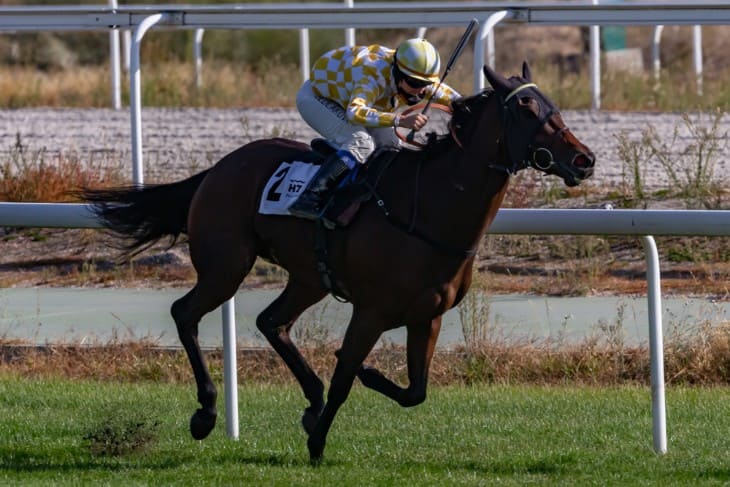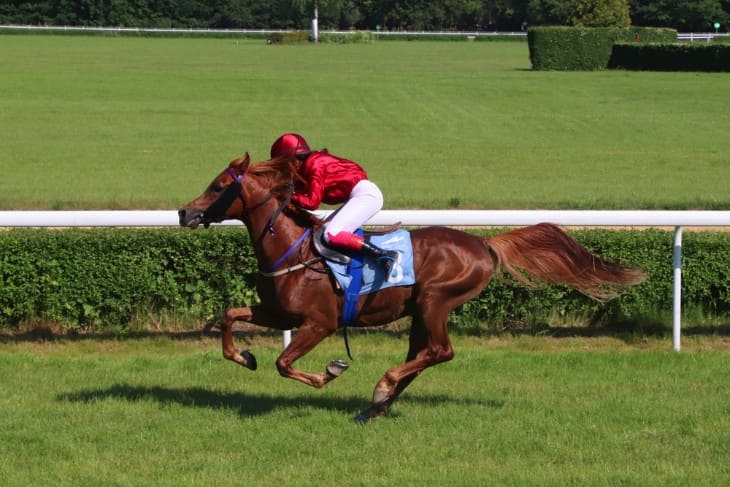- The Genesis of the Grand National: Tracing the Roots
- Legendary Horses of the Grand National: A Retrospective
- Pivotal Moments in Grand National History
- The Evolution of Racecourse Design and Infrastructure
- Impact of the Grand National on Horse Racing Culture
- Key Figures: Jockeys and Trainers Who Shaped the Race
- The Grand National Women's Role
- Memorable Grand National Races: Triumphs and Tragedies
- Challenges and Controversies,Safety and Ethics
- Conclusion
The Genesis of the Grand National: Tracing the Roots
A famous horse racing event in the world today, The Grand National, began way back around the 19th century. It first took place at Aintree Racecourse near Liverpool in 1839. However, prior events influenced its establishment. The roots of steeplechasing, a fundamental aspect of the Grand National, began in Ireland in the 18th century. These early races involved horses racing from one church steeple to another, hence, 'steeplechase.' By England's 1830s, this type of racing became popular and thus paved the way for official meetings.
William Lynn, a Liverpool hotelier, established Aintree Racecourse; this ground was quickly selected as the home for continuing races for many years after that time. Its location close to town made it accessible to spectators who would come there to watch it. In addition, more people became interested in participating because of the diverse hurdles at different points and difficult lengths, making it more eye-catching than other ancient British horse events.
Legendary Horses of the Grand National: A Retrospective
Over time, many legendary horses have left indelible marks on this race's history. For example, Red Rum, trained by Ginger McCain, is perhaps the most famous, having won three times (1973, 1974, and 1977). This outstanding champion overcame very long odds and showed remarkable resilience through his numerous comebacks during his career.
Another great example is Manifesto, a consistent and durable horse that raced from the late nineteenth century to the early twentieth century, taking part eight times in Grand Nationals and winning twice (1897 and 1899). He completed all these tasks at sixteen, thus showing how tough he must have been to endure such harsh conditions as those associated with this sport.
These are only some of the animals, among others, that shaped grand national history and became eternal symbols of excellence in the broader context of equestrianism.
Pivotal Moments in Grand National History
Grand National's history is full of specific moments that may be considered "turning points" that have significantly impacted future events. One such critical moment was during the 1956 race when Devon Loch, with Dick Francis aboard fell yards from victory, allowing E.S.B. to triumph. This remains one of the most memorable incidents about Grand National races, revealing its unpredictability.
Another significant event was in 1843 when The National Hunt Handicap Chase was introduced, making the weight-for-age race a handicap for The Grand National. This move made the competition more fierce and unanticipated since all horses started these runs equally. Some of these pivotal moments include;
- 1967 Race: Foinavon's unexpected victory after a pile-up at the 23rd fence, which is now named in his honour.
- 1973 Race: Red Rum's first victory, marking the beginning of his legendary status.
- 1993 Race: Known as 'The Race That Never Was,' a false start confused, and the race was declared void.
The Evolution of Racecourse Design and Infrastructure

The changes at Aintree Racecourse, the home of the Grand National, reflect how much horse racing has changed over time concerning demands and safety. Initially, the course was considerably dangerous, with obstacles like stone walls and broader ditches. However, these have gradually been replaced or altered for better horse and rider safety measures. For example, Bechers Brook has undergone several changes that have reduced its severity after being the cause of many falls.
Simultaneously, there have been major improvements in the infrastructure around the racecourse as well. Tens of thousands of spectators flock to the Grand National yearly, necessitating improvement in facilities, including improved crowd control systems. This means that event organisers must upgrade their viewing areas, hospitality services such as food courts, and transportation connecting to the racecourse. Consequently, this results in visitors' enjoyment while at the same time selling this global heritage to the rest of the world.
Impact of the Grand National on Horse Racing Culture
This text asserts that The Grand National has tremendously influenced horse racing culture not only in Britain but all over the world. In British society, it is more than just a game but an institution that influences general attitudes towards sport.
Therefore, annually, it surpasses millions of viewers across borders, thus making this sport popular among the masses. Hence, its popularity helped make horseracing more accessible to an inclusive audience, unlike other sports games. It is a combination demanding great skill, endurance & luck, magnetising lovers because you never know who will win.
Moreover, from literature to fashion trends, Derby Day has become part and parcel of British life since its inception as a race meeting in 1779. There are also some books about it and fashion trends, particularly concerning hats worn during races, thereby underlining how important they are for people's lives. Besides being a horse race, it is deeply rooted in British social and cultural heritage.
Key Figures: Jockeys and Trainers Who Shaped the Race
Therefore, throughout the history of the Grand National, some jockeys and trainers have indelibly set a benchmark for future participants. People such as George Stevens won this race five times between 1856 and 1870, which is still a record. Also, trainers like Ginger McCain trained Red Rum, a horse that won the most races ever in Grand National's history. The achievements of these personalities have made horse racing better than what it was before.
This trend has been continued by trainers such as Willie Mullins or jockeys like Leighton Aspell in recent times. All these successes reflect how dynamic the race has become while attempting to achieve results of higher quality on every occasion that the event takes place. These individuals know how much the sport must be respected, thus making it a critical sporting activity globally today. Above all, their contributions have helped raise its profile and made it one of the most significant events globally, which each year features hundreds of horses from different countries.
The Grand National Women's Role
Women's role in the history of the Grand National signifies a landmark in the development of this race. The Grand National was initially dominated by men, with women playing a minimal part as jockeys. This started changing in the late 20th century when it mirrored other societal changes moving towards gender equality. Women pioneers have been breaking barriers and stereotypes in a traditionally male-oriented sport.
Critical moments of women's participation in the Grand National include:
- 1977: Charlotte Brew became the first woman to ride a horse named Barony Fort in the Grand National Race.
- 1982: Geraldine Rees became the first woman to finish the course, riding Cheers.
- 2021: Rachael Blackmore made history by winning Minella Times and becoming the first female jockey to win any grand national race.
Memorable Grand National Races: Triumphs and Tragedies

Grand Nationals' annals include races whose narratives have remained dramatic for various reasons, victories or tragedies. These events engrossed audiences and are forever etched into racing fans' collective memory. Extraordinary races portray unexpected triumphs, agonising almost-wins, or gallant horses/jockeys.
Some of these unforgettable grand national races include:
- 1956 Grand National: The dramatic collapse of Devon Loch yards from the home line enabling E.S.B to win.
- 1973 Grand National: Red Rum's initial victory, thus beginning his legendary status.
- 2001 Grand National: Red Marauder's success was one of few among many tough records, with only four horses managing to finish.
Challenges and Controversies,Safety and Ethics
Safety issues, especially those related to ethics, are some of the challenges historians of the grand nation have experienced over time. Therefore, the race is often considered dangerous for its participants; its rigorous character makes animal welfare activists worry about the horses involved.
Consequently, some challenging encounters have led to injuries and deaths of animals, which, in turn, has raised questions on the morality surrounding such occurrences during this physically demanding event. The above issues have caused modifications in terms of fence design and the course layout, which are aimed at enhancing safety measures for both riders and horses.
Another source of controversy is the use of whips and animal welfare rules. The conversation centrescenters on how to balance keeping the sport competitive and treating the animals used humanely. These ongoing discussions reflect a broader societal concern for animal welfare, leading to stricter sports regulations and oversight.
Conclusion
Lastly, the Grand National is an iconic event in horse racing history that has transformed through time since its inception. It remains a testament that horse racing can be traditional while still evolving at all moments, as it demonstrates unflagging popularity among many who cherish tradition but relish progressiveness.








